Today marks 5 weeks and 4 days since Alex was burned by boiling water at Scout Camp. His healing process has been remarkable; he’s now off all medications and continues to clean and care for his wounds at home. The next healing benchmark that we’re working towards is permission to swim (and enjoy a postponed 13th birthday pool party). There are a few more stories about tremendous experiences of grace that I have wanted to write about, but haven’t yet.
And then today, Alex boiled water to make pasta for himself and Max for lunch, for the first time since the accident.
“Were you nervous?” I asked.
“Yes!” Both Alex and Max intoned together.
Yes, they were. But they did it anyway. The virtue of courage isn’t being fearless; it’s following through with responsible action despite acknowledging fears.
So. It’s difficult for me to tell this story, but inspired by my courageous 13 year-old and 11 1/2 year-old sons, I’m going to do it anyway.
Five weeks ago today we had Alex’s first outpatient wound care appointment, called the “Tub Room.”
Cleaning the burns is critical to the healing process, and it’s just as excruciating as it sounds. For this reason, great attention is given to pain management. I followed the instructions I was given: to bring the prescription bottle of Vicodin along with us and await the medical staff’s instructions to take it precisely 30 minutes before the Tub Room appointment was to begin.
I remembered this process from my sister’s experience. It was called the Tank Room, and it happened 28 years ago, but it remains as the yardstick against which I measure excruciating pain.
As I reached out to my friends and family for prayer support, I petitioned Mary the Mother of God to give me the strength to stand by my son through this. I imagined her watching her Son carrying his Cross.
![Pethrus [CC BY-SA 3.0 (https://creativecommons.org/licenses/by-sa/3.0)] Mary 4th Station](http://www.diennodemarest.com/wp-content/uploads/2019/07/Mary-4th-Station-550x413.jpg)
Mother Mary, give me the strength.
First, we met with the Clinic (outpatient care team) who checked on Alex’s pain management. In addition to explaining the procedure, they identified the pain management options Alex had available to him should he need. Informed and grateful, we headed down to the PICU floor, and waited for his turn. We followed everything we were told to do; Alex took his Vicodin exactly when directed, and we entered the Tub Room.
Alex lay on the table – or “Tub,” which was a metal table with sides that folded up. As the tech took his dressings off and we got our first look at the healing wounds, the air hitting his skin started to hurt. A lot. It felt better to have the warm water running over them, so as I was allowed to assist, I maneuvered the water best I could.
Mary, give me the strength to stand with my son, as you stood with yours.

As the tech began to wipe down his burns, Alex arched his back and turned red as he screamed in pain.
Immediately, he stuttered a request for the “lollipop” of Fentanyl (morphine) that the Clinic had offered us.
Immediately, the tech stopped…
But somehow, there was a miscommunication.
Instead of having immediate access to the painkiller, an order for the prescription had to be placed… and we needed to wait. Instead of the lollipop taking effect immediately, we were told it would take another 30 minutes to work… and we needed to wait.
The pain of the air hitting the newly forming skin had Alex screaming for water to be run over his legs. The tech was telling Alex, “You need to calm down…” again and again.
At first I argued logically; “This wasn’t what they told us to expect.”
“That’s not the way it works. You need to calm down.”
“Please, just cover my burns…” My child was red-faced, pleading, screaming in pain, and waiting was only prolonging it.
I don’t entirely know how much time passed, but eventually I went “Mama-Bear.” But instead of biting her head off, I pulled on the courage of Mother Mary, grasped at every ounce of grace, and firmly demanded: “Just. Finish. Cover his wounds like he’s asking.”
I held his head and his hands as he screamed. And I didn’t lose it.
I stood by my son.
Eventually it was over. He was rebandaged, and we scheduled our next Tub Room appointment three days later, on Friday.
Horrific.
That was the only word I could use to describe our experience.
As we drove home, we talked. Unthinkable pain for Alex – worse than the day of the accident itself. Undoubtedly the worst day of either of our lives.
The reality was that we had to do it again in three days. And he was scared. As was I.
“I promise you it will be different. You will never have that kind of experience that again. Not only will you have the proper amounts of pain-killer, that tech won’t be anywhere near us ever again.” (Mama-bear, indeed.)
Rewind back to the day after the accident, while we were still in the PICU, Alex initially gave a polite “no thanks” to my offer of the Sacrament of Anointing of the Sick.
“It’s not just asking for the grace of physical healing from Jesus, Anointing of the Sick also offers a spiritual strengthening for the journey ahead.”
“Yeah, I know. No thanks.”
Fast forward to the car ride home from that first Tub Room appointment, stopped at the light, waiting to turn on to the highway, I asked again.
“Yes,” he replied, without hesitation. And then he drifted off to sleep.
After we got home, I called my pastor and arranged for Alex to receive Anointing before his next Tub Room appointment. I also called the hospital and spoke to the managers of two different departments, and by the grace of God managed to communicate clearly without becoming completely unglued. I was listened to… I felt heard… and by the end of the second phone call, I felt less anxious and more confident.
It would have been very easy to yell and scream under the guise of “Mama-Bear,” aptly named because it’s recognized as that instinctive force that takes over a mother protecting her child. Apparently the intercession of Mary makes it possible to Mama-Bear with grace. I have renewed respect for Mary and a deep appreciation for the strength, courage, and grace it must have taken for Mary to stand by her Son.
The next day, both Max and I were able to join Fr. Wencil in praying over Alex as he was Anointed – on his forehead and hands. And as promised, that Sacramental grace along with my Mama-Bear phone calls managed to render a better medicated Tub Room experience that looked more like a sleepy spa day.
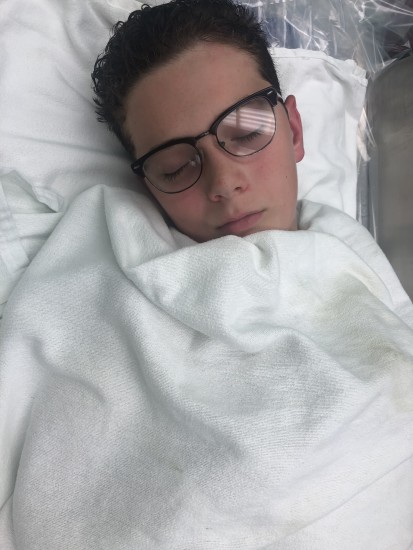
Though there isn’t a sacrament to anoint the Mothers of the Sick, Mary is always available for intercession. There are also tearful hugs with friends (and wine and chocolate)… all of which I also took full advantage.
If you enjoyed this post, Please Share
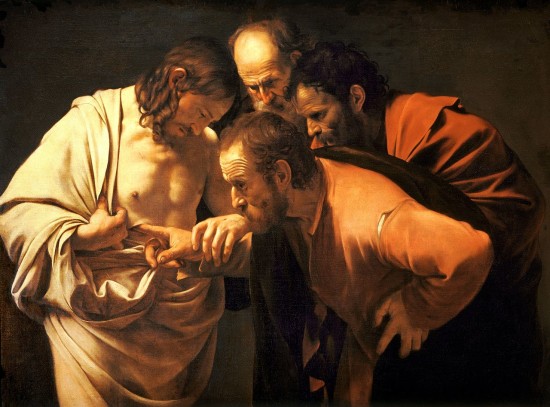

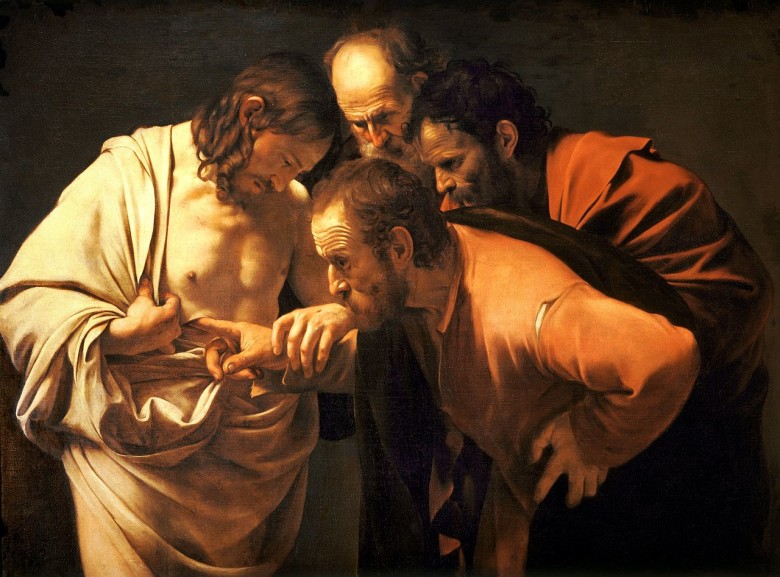

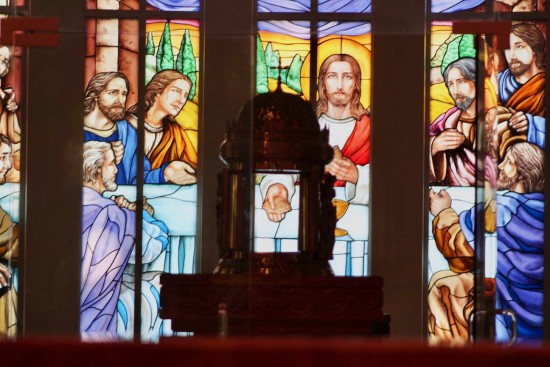
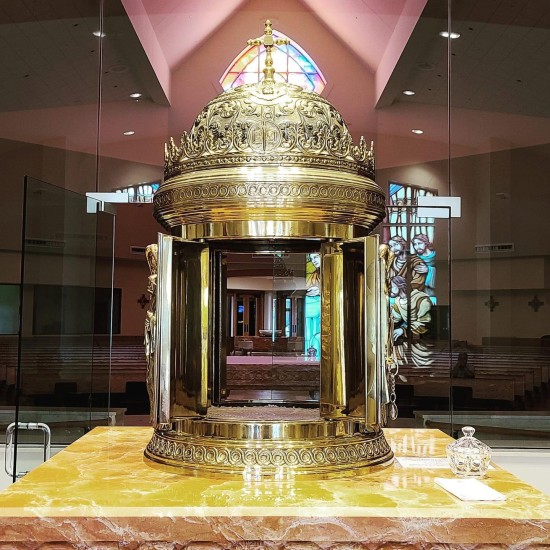
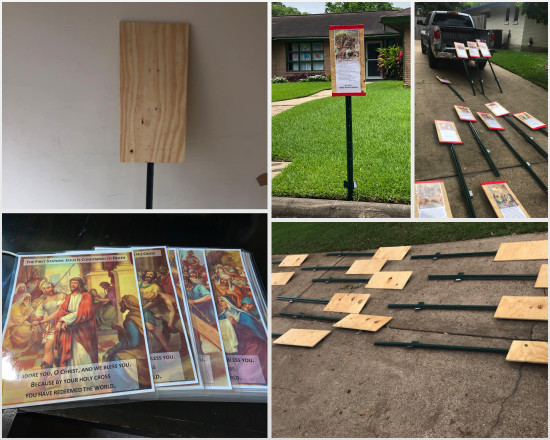

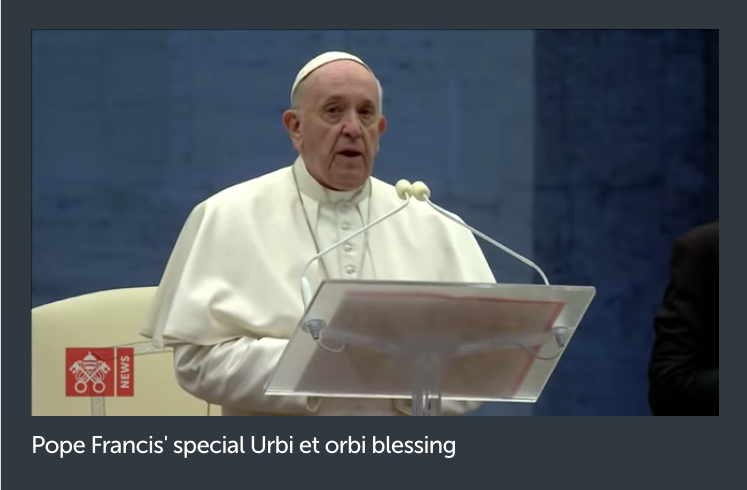
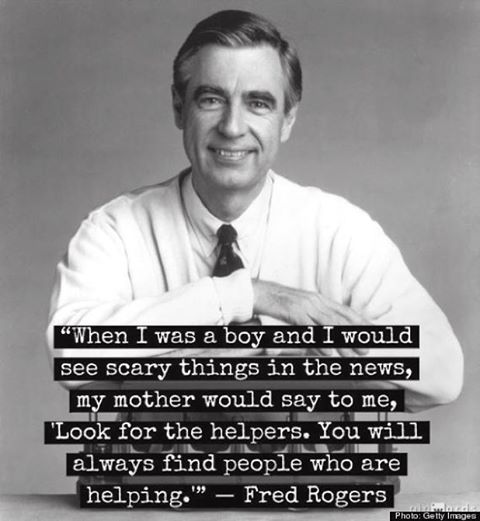
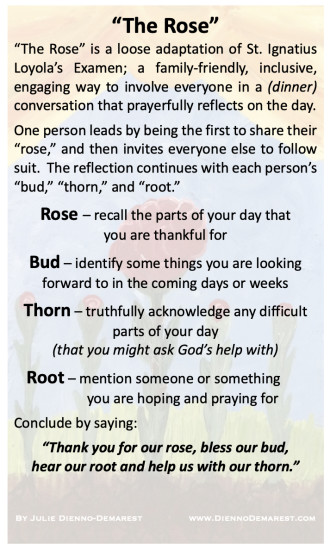



![Pethrus [CC BY-SA 3.0 (https://creativecommons.org/licenses/by-sa/3.0)] Mary 4th Station](http://www.diennodemarest.com/wp-content/uploads/2019/07/Mary-4th-Station-550x413.jpg)


